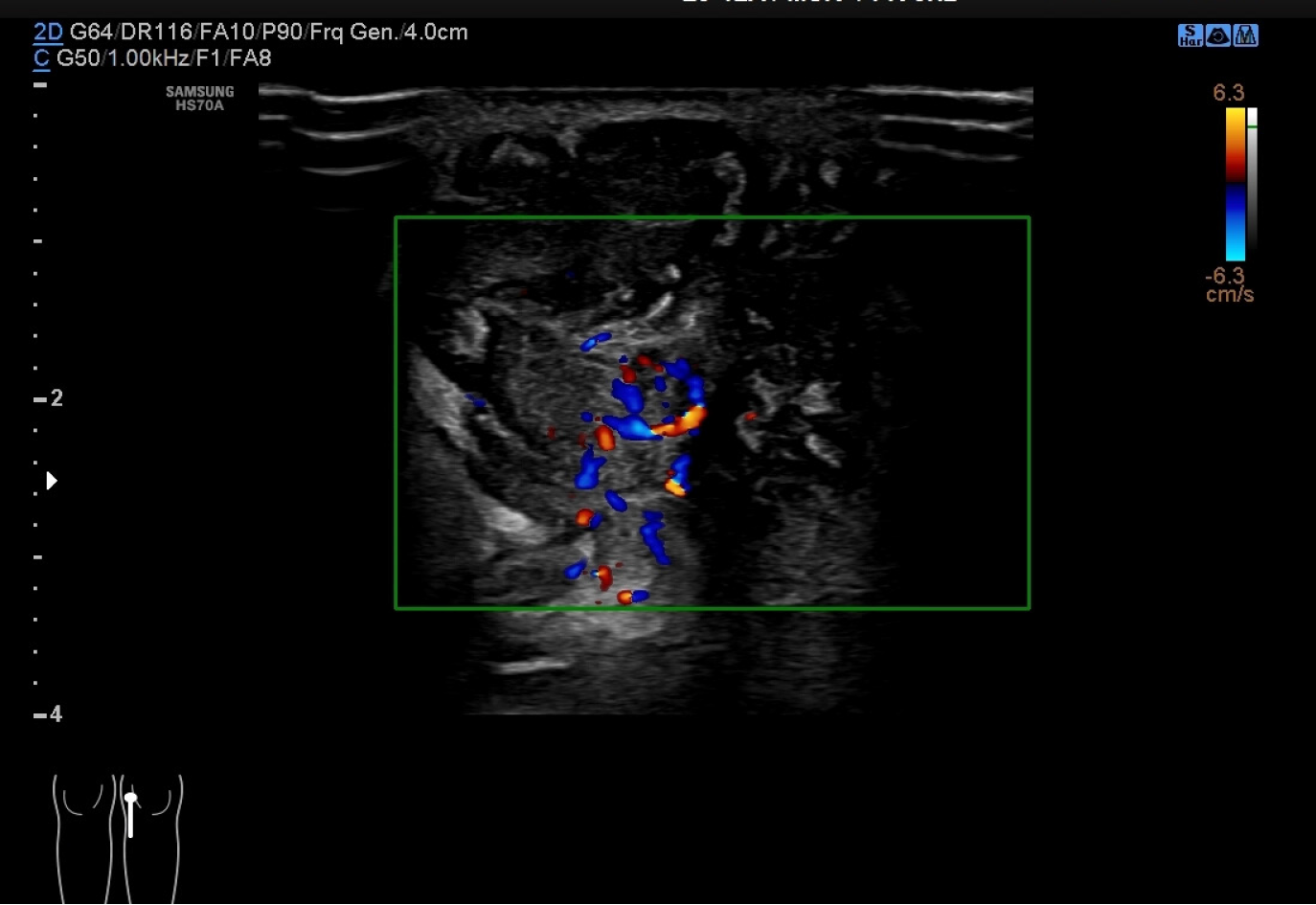Copyright
©The Author(s) 2021.
World J Clin Cases. Aug 6, 2021; 9(22): 6457-6463
Published online Aug 6, 2021. doi: 10.12998/wjcc.v9.i22.6457
Published online Aug 6, 2021. doi: 10.12998/wjcc.v9.i22.6457
Figure 1 Color Doppler ultrasonography findings.
Color Doppler ultrasonography revealed an ill-defined hypoechoic mass in the subcutaneous soft tissues of the medial left knee with abundant dotted and band-shaped blood flow signals in and around the lesion.
Figure 2 Axial computed tomography image.
The axial computed tomography image revealed that the oval well-defined lesion (orange arrows) on the medial side of the left knee had a lower computed tomography value (34 HU) than adjacent anatomical structures (62 HU), which were compressed and displaced.
Figure 3 Magnetic resonance images of the malignant peripheral nerve sheath tumor.
A: The sagittal T1-weighted images of the left knee showed a heterogeneously hypointense mass (orange arrows), with an irregular shape, clear boundary, internal lobules and the absence of a visible entering or exiting nerve; B: The lesion (white arrows) showed heterogeneous hypointensity on the fat-saturated T2-weighted images and the hyperintense grid-like fascia (orange arrows) suggested peritumoral edema; C and D: The lesion with thickened skin (orange arrows) also showed heterogeneous enhancement with non-enhanced focal areas (orange arrowheads) on contrast-enhanced T1-weighted images in the sagittal and coronal plane.
Figure 4 Postoperative pathological examination.
A: Hematoxylin-eosin staining photomicrograph (original magnification × 200) of the mass showed tightly packed spindle cells; B: Immunofluorescence examination (original magnification × 200) demonstrated S100 positivity on immunohistochemical analysis.
- Citation: Yang CM, Li JM, Wang R, Lu LG. Malignant peripheral nerve sheath tumor in an elderly patient with superficial spreading melanoma: A case report. World J Clin Cases 2021; 9(22): 6457-6463
- URL: https://www.wjgnet.com/2307-8960/full/v9/i22/6457.htm
- DOI: https://dx.doi.org/10.12998/wjcc.v9.i22.6457












